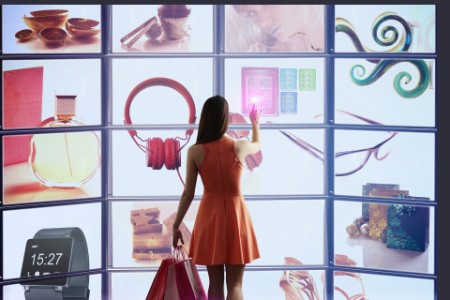In the coming years, companies in the services and retail sectors will undergo major changes in value creation for their customers. The FutureConsumer.Now-programme of EY identified 8 hypotheses that will help shape these changes. How flexible and alert is your company?
New technologies and competitive factors push traditional ways of thinking overboard
How much time do market leaders spend exploring future business opportunities? The answer for most companies in the Consumer Products & Retail sector (CP&R) is perhaps: 'not enough'. In conversations with business leaders, it appears that they primarily focus on the short term.
This is no surprise or criticism.
New technologies, innovative business models and unexpected competitive factors are certainly shaking the CP&R sector to its foundations. Moreover, these changes come at these companies at a dizzying speed. In this context it can come across as being self-centered to already make time available to predict how the consumer will behave in five or ten years and what impact this will have on the business. Yet this is not the case.
A long-term vision can help in competition
The more difficult it is to get a vision of the future, the more benefit companies will derive from succeeding in developing a long-term vision. This is not about predicting the future, but rather about thinking 'out-of-the-box' and taking the unexplored paths.
In the past months we have explained this to our clients who are active in the CP&R sector. During hackathons in Berlin, Los Angeles, London and Mumbai we invited business leaders, futurologists, creative people, and EY employees to dynamically think together about how the world of the future consumer will evolve.
One of the objectives is to question existing ideas and prejudices that have helped shape the CP&R sector for decades already. This way we can create and explore new theories and – more importantly – examine where value is created for customers and how the industry must change.
Questioning familiar and traditional ideas in this way can be very confrontive. After all, this method takes us out of our comfort zone. Yet it is a necessary condition for growth. We have to think more 'out-of-the-box' and dare to question standard ideas in order to be able to see business from new perspectives.
Spearheads to challenge existing ways of thinking
It is not easy to break through fixed thinking patterns within an organization. The following spearheads emerged during our recent hackathons:
- A clear structure as a basis
Creative chaos is good, but chaos in itself must be avoided. Let employees know that creative thinking about doing business is a carefully planned process, but without knowing the final destination.
- Gather a group that is as heterogeneous as possible to brainstorm ideas
Surround yourself with colleagues (with a mix of young and old) who have diverse views and backgrounds. This leads to an interesting and challenging exchange of ideas.
- Come prepared at the start
Eight clear, plausible and well-considered core hypotheses are central during each hackathon. This provides sufficient material to identify the main driving forces of change.
- Create speed
When generating new business ideas, it is crucial to quickly reach cruising speed. Working too slowly causes lead-times that are too long. So come out of the comfort zone, but stay focused on delivering ideas.
- Failing is allowed, but learn from mistakes
New ideas are in fact prototypes, with their growing pains, minor errors and unfinished elements. Do not wait until an idea is completely polished, but let it be tested by the outside world. Improve what works and drop what doesn't work.
- Have fun, but in a controlled way
The purpose of coming up with new business ideas is to define plausible future projects and formulate action-oriented and clear consequences for the way of doing business today. Keep control over manageable parameters (employees, location, timing, etc.) but leave room for factors that are not under your control.
Preparing for tomorrow's client certainly requires a diverse team that has the permission to fully innovate and experiment. Thanks to the specific services of EY, we can help you in your preparations for new customers.


